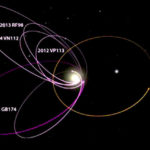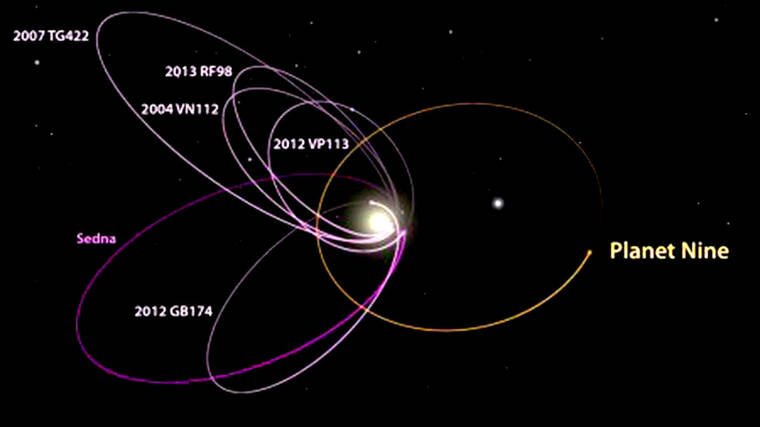Astronomers using the Subaru Telescope believe they have found evidence of a ninth planet in the solar system.
Astronomer Michael Brown and astrophysicist Konstantin Batygin, both professors at the California Institute of Technology, have after years of observations completed a study postulating that an unknown new planet might exist beyond the orbit of Neptune.
According to the study, which is to be published in a future edition of “The Astronomical Journal,” Brown and Batygin used the Subaru Telescope on Maunakea to observe the movements of several objects in the Kuiper Belt, a band of various icy celestial objects outside of Neptune’s orbit.
Nearly 20 years ago, certain objects in the Kuiper Belt were found to have strange orbits clustered together that could only be explained by an unknown massive object influencing them, although that did not necessarily suggest the existence of a ninth planet.
But in 2016 — 10 years after Brown’s research was used to demote the previous ninth planet, Pluto, to a dwarf planet — he announced that he believed there to be a Planet Nine roughly 10 times the size of the Earth orbiting 20 times farther from the Sun than Neptune.
Subaru astronomer Tsuyoshi Terai said Brown used Subaru’s Hyper Suprime-Cam, an extremely powerful wide-field digital camera, to conduct about 30 nights of observations between 2016 and 2019.
Although Terai said none of the observations revealed Planet Nine, by tracking 11 additional objects in the Kuiper Belt, Brown and Batygin have 99.6% confidence that the objects’ strange movements are not the result of some cosmic fluke and are caused by a yet-unseen large object.
Furthermore, according to the study, the two researchers have estimated the potential ranges of the hypothetical planet’s mass and orbital characteristics to within 95% probability.
Based on the results of 121 simulations performed during the study, Brown and Batygin conclude that Planet Nine is most likely a gas giant with an icy and rocky core and is about six times the mass of Earth. The simulations also predict, with a 95% probability, the region of the sky the planet may be found within.
Despite this, the planet has not been directly observed, and its existence remains conjecture.
Brown and Batygin write that based on the planet’s potential orbits and its reflectivity, directly observing it might require dedicated searches on 10-meter telescopes or larger.
Brown and Batygin also concede that the composition of the planet may be very different than their predictions, which would have wildly varying impacts on its detectability.
Terai said confirming the existence of a ninth planet would have significant impacts on the existing models of how the solar system was formed, and would raise questions such as how the planet was formed in the first place, how it ended up so far from the Sun, and how it has influenced the movements of other celestial objects over the eons.
Brown did not respond to requests for comment. However, he told National Geographic that he believes the ninth planet will be discovered soon.
“I think it’s within a year or two from being found,” he said, before adding: “I’ve made that statement every year for the past five years. I am super-optimistic.”
Email Michael Brestovansky at mbrestovansky@hawaiitribune-herald.com.











